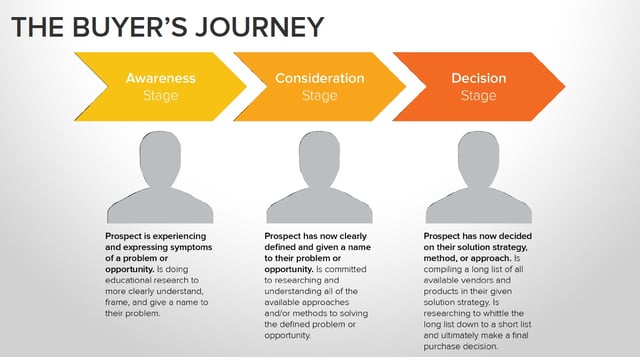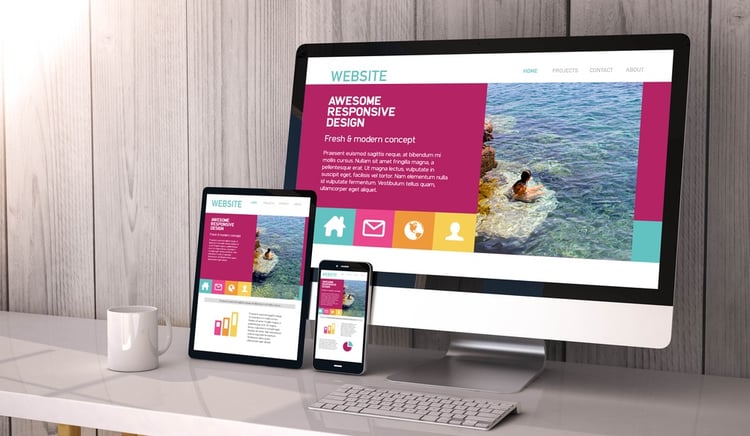

B2B Blogs: Your Holy Grail To Increasing Your Website Traffic


Here’s the scene: you’ve just racked up the best blog post to draw in potential customers to your website.
You pat yourself on the back for what appears to be a promising career in blog writing. You even imagine yourself walking up on the auditorium’s stage one day, all spiffy in your Oxford, to deliver the most riveting insights yet on B2B inbound marketing. Please applaud our blogging guru in the making!
A month later… a marketing report reaches your desk, indicating measly page views and zero lead conversions for the blog that you’ve laboured over.
“*&$#^&*(_)*)&(%^%%%!!!!!”
Where Did You Go Wrong?
Here’s the thing about B2B blog writing: it’s expected to lead your prospects further down your marketing funnel. This requires identifying their pain points and writing something of value for them, so they can start engaging with your brand. If it doesn't meet this goal, then you might as well say goodbye to your B2B blogging success.
Don't forget: 52 percent of B2B marketers say blogging will be most critical to their content marketing success in 2017, which means it's time we squeeze the most out of our B2B blogs and give our traffic-driving techniques a good swift kick.
Read: Is the Content You Create a Waste of Time and Money?
Rocket Your B2B Blogs To Success
In B2B blogging, it’s important to note that what works for one company may not work for another.
Your success isn’t entirely an intrinsic property of your content. Rather it’s equally about understanding whom you’re writing for, what your audience’s pain points are, and your content’s value to your readers.
In this piece, you will uncover some of the most useful tips in turning your high-value blogs into an effective website traffic driver and a powerful lead magnet. Follow these tips and your content can definitely be more impactful and aligned with the goals of your target audience.
1) Find out what ticks (and what doesn't) with your audiences.

You’re a content sleuth. A detective who tracks down your audience’s content and context to understand them.
For you to whip up effective content, be mindful where your readers are in their path to purchase.
Several questions:
- Have they just run into a problem and now are scouring the internet for opinions and insights (Awareness)?
- Have they expressed interest in an area of what your business does (Discovery)?
- Have they already come up with a shortlist of possible solutions to address their problem (Consideration)?

Several ideas: Look back at your past marketing campaigns and identify the content that really resonated with them. Head over to Quora, read their questions (and answers) to gauge interest areas.
2) Write in a blog format that works for your readers and company.
Mastering the art of B2B blog writing requires that you also select the most suitable format for your readers. Depending on your purpose and the profile of your audience, you can always experiment with a number of formatting styles to attract your niche market.
Remember: you cannot take a blanket approach to target your B2B audience, as it involves decision makers with their own goals and priorities. Your content therefore must always consider factors such as budgets, business risks, and buying attitudes.
Being aware of your audience’s needs goes a long way in improving your website’s Google ranking which depends, among others, on the onsite experience of your visitors. Onsite experience is measured in terms of the “long click” (or when someone went to a search result, ideally the top one, and did not return).
Now think about your audience and assess which of the following formats can likely hook them into your blogs:
- Opinion Piece
Often considered a difficult format to pull off, an opinion piece is a content written by a thought leader or a professional, almost along the line of an expert newspaper article.
Competition for traffic is usually low for blogs in this format, as it requires your content to be link-worthy and peer-worthy. However if done correctly, it has great potential to boost your website traffic because it allows you to align yourself with industry experts whose insights and advice are well recognised in the market.
Example: SAP's innovation blog, Innovation Agenda, which features scores of opinion pieces from the software company's business leaders.
- Checklist
When written well, a checklist blog is something that’s bound to generate more leads for your business. This blog combines the Q&A format and the listicle and may work well for middle of funnel people.
Just like an opinion piece, competition for traffic is low for a checklist blog because it “doesn’t cater to a clickbait heading… but offers more practical value to the reader.”
It’s very much like a troubleshoot manual, and thus creates among your readers the feeling of being personally attended to.Examples: Checklist blog posts we wrote for our eCommerce campaign: Essential eCommerce Marketing Checklist: Part 1 and Essential eCommerce Marketing Checklist: Part 2.
- Listicle
Listicle, or a content written in the form of a list, has gained immense popularity in the last few years for a simple reason: Reader friendliness.
This meant using gifs, tweets, pins, and lists to capsulise information in eye-catching formats.
Although competition for traffic is high for this type, this is something that busybee executives can appreciate reading. A bulleted blog post makes dense information more scannable, thus saving time for professionals.
Examples: Click here and here.
3) Optimise your blogs for mobile consumption.
According to a survey conducted by Millward Brown Digital, 42 percent of B2B decision makers use their mobile phones during their purchasing process. And Google’s study also reveals that 48 percent of customers feel frustrated and annoyed when a website isn’t mobile friendly.
TLDR: Keep your blogs optimised for mobile consumption.

Mobile optimisation isn’t just about cutting up your wall of text and using bolded headers, or making sure that your design automatically adjusts to a user’s smartphone. Mobile optimisation is the whole ecosystem of getting your content on the right screens and in front of the right eyes.
So what does it all mean?
- Understand the evolving approaches in internet search. Talk about Google’s shift from an “information-based search” to a “semantic search,” where concept matching is now the goldmine. For B2B bloggers, this is an opportunity to link your content to sources with same topics, use a set of words related to your content topic, and perform keyword research—all of which contribute to increasing your search engine relevance.
- Optimise your content for social media platforms. Our rule of thumb is: Go for images with high visual impact. Assume a personable voice. And make your content totally shareable.
- Perform your usual hygiene tests. Is my text readable across all devices? Are my social buttons working? Do I have the right number of text entry fields to encourage readers to share their personal information with us?
Examples: Our blog post on 8 eCommerce payment gateways in Singapore and another on measuring your marketing ROI.
4) Get influencers on board.
Finally! A blog post tailored for your audience!
Take it however as just the start of the long road to blogging superstardom. As we mentioned, a high-value and well-segmented content does not automatically lead to website traffic.
But fret not: You don’t have to suffer to produce high-performing blogs all the time. What you can do is tap into your network and identify influencers whose clout can be your card up your sleeve.
Because influencers command a strong following, they can:
- Increase your brand authority and improve your website’s Google ranking
- Keep your blog fresh
- Introduce you to hard-to-reach customers.
The B2B Blogging Grail: A Relationship with Your Readers
Many are quick to lament that digital technology has tremendously reduced almost all blog pieces to marketing fluff.
But going digital isn’t really a sorry state of affairs as some have assumed. For us marketers, it’s all about understanding new expectations, or even more likely, creating a new digital experience that moulds our customers to become better decision makers.
We can’t help but emphasise: In inbound, it’s content plus context. So use B2B blogs to know your customers and cultivate a long-term relationship with them.
Read: The One Question That Matters Most to Your Target Audience
Don’t forget: Relationships are the bedrock of any successful B2B company, and the best way you can show engagement with your readers is by putting out content that is high-value, relevant, and valuable to them.
Header image: Pexels
More insights